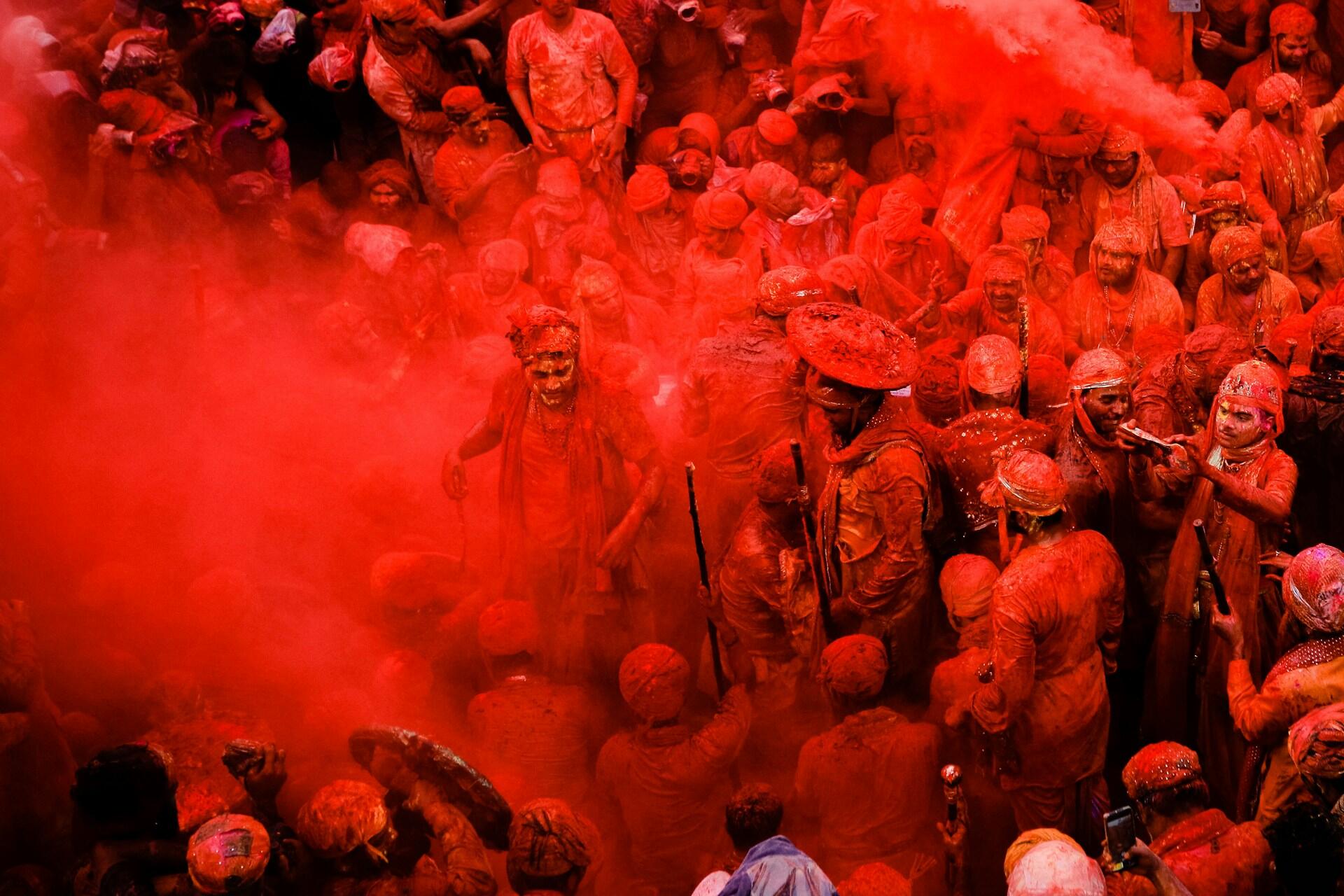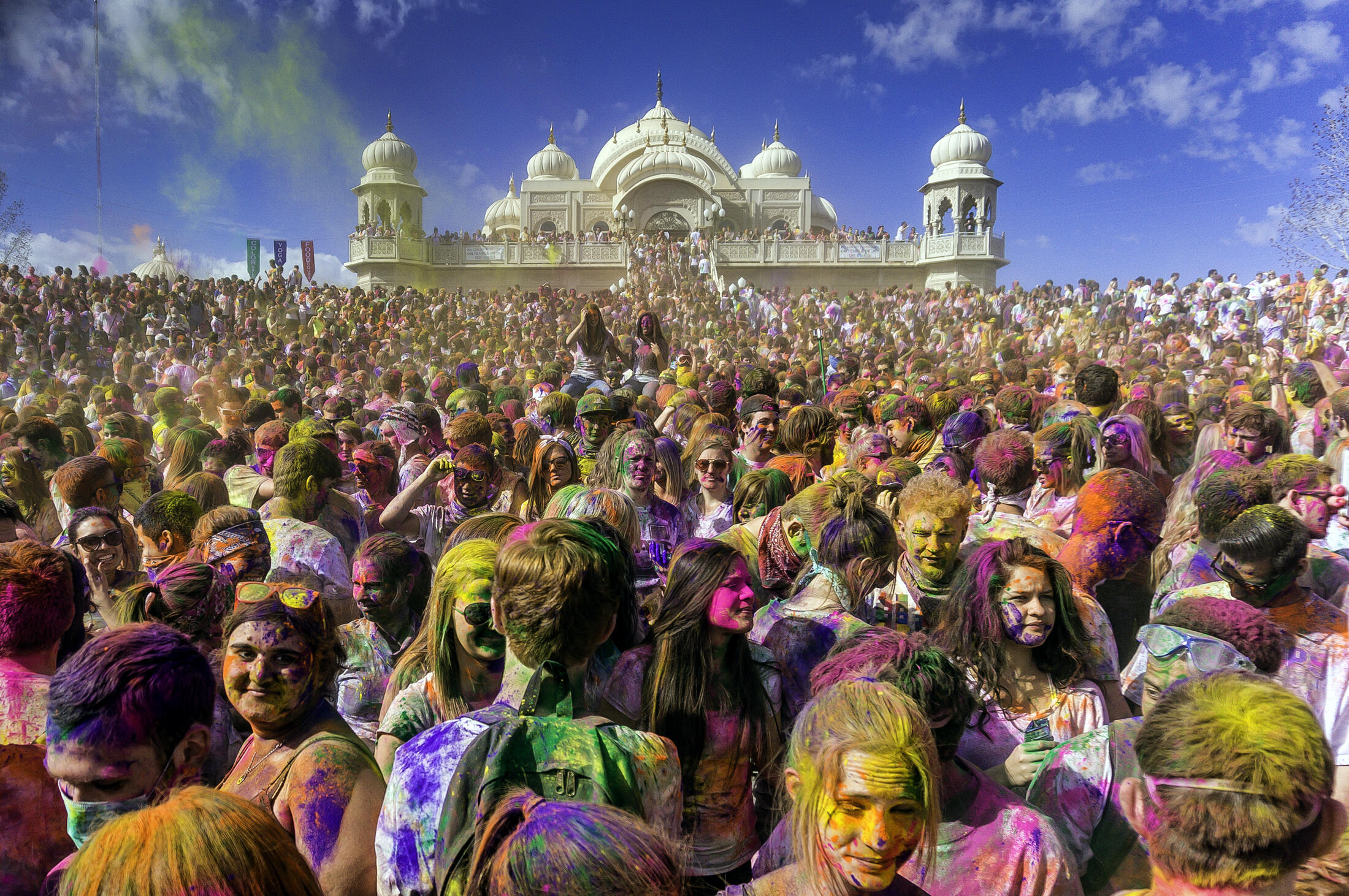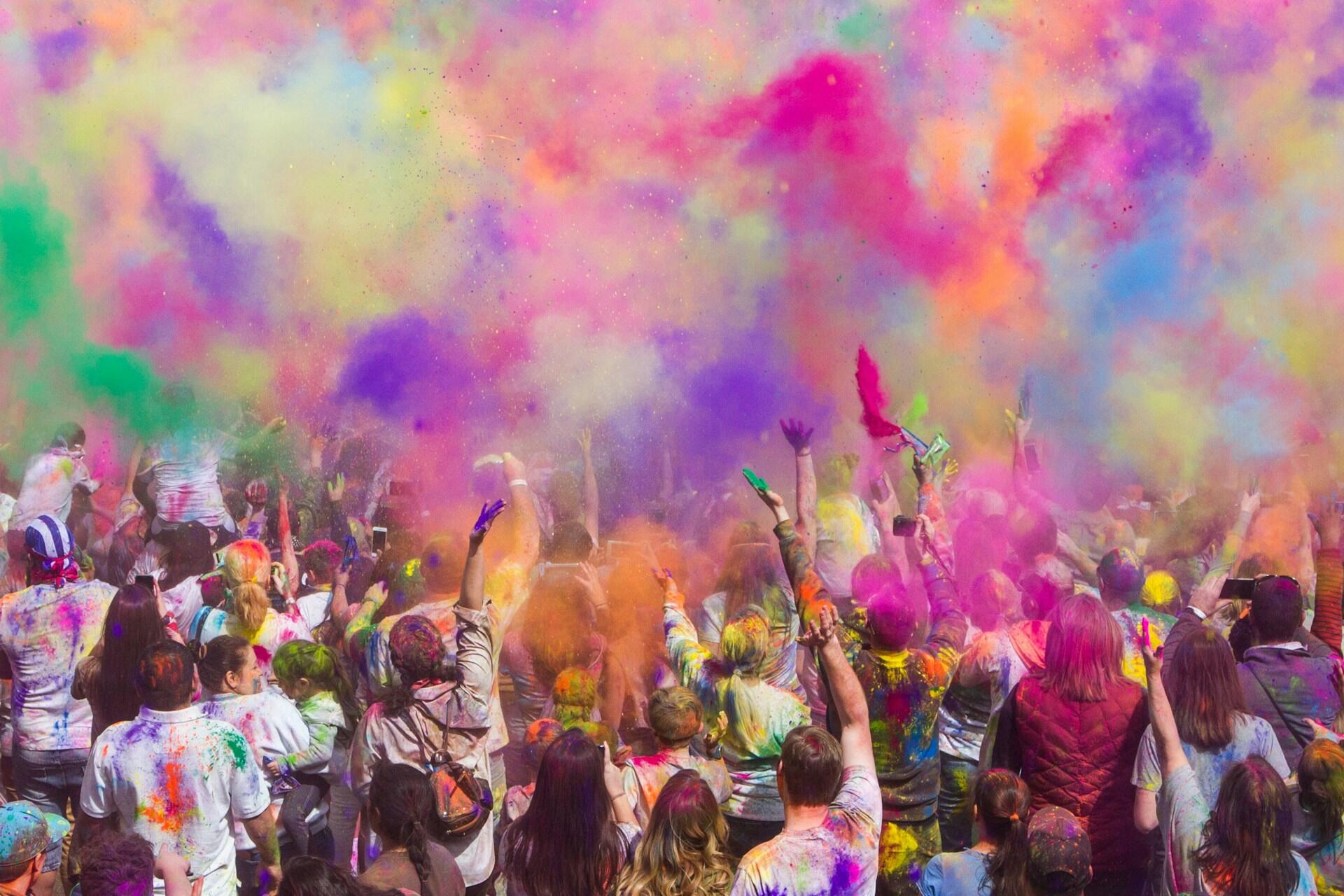Holi, one of the most vibrant and widely celebrated Hindu festivals, marks the arrival of spring and the triumph of good over evil. Known as the "Festival of Colours," it is a time of joy, togetherness, and cultural unity, where people throw brightly coloured powders, share festive sweets, and embrace the spirit of renewal. Rooted in Hindu mythology and enriched by centuries of tradition, Holi is more than just a playful celebration—it carries profound religious, social, and historical significance.
Before delving deeper into its traditions and modern relevance, test your knowledge with our ultimate Holi quiz!
Quiz
Quiz :
Holi's Diverse Regional Expressions Across India
While Holi is celebrated throughout India, the festival takes on distinctive forms across different regions, each adding their unique cultural fingerprints to this ancient celebration.
In Mathura and Vrindavan, Lord Krishna's birthplace, Holi transforms into an extended festival lasting up to 16 days. Here, celebrants enjoy Phoolon ki Holi, where fragrant flower petals replace the traditional powdered colours, creating a gentler yet equally beautiful celebration.
The region is also famous for Lathmar Holi, where women from Barsana village playfully chase and "beat" men from neighbouring Nandgaon with sticks, re-enacting the mythological teasing between Radha and Krishna.

In West Bengal, the festival manifests as Dol Jatra, centred around devotion rather than exuberant play. Beautifully decorated swings carry idols of Radha and Krishna, while devotees circumambulate them, singing devotional songs and applying colours with respectful restraint.
The warriors of Punjab transform Holi into Hola Mohalla, a spectacular display where the Sikh community combines the joy of colours with demonstrations of martial prowess. Initiated by Guru Gobind Singh in the 18th century, this variation showcases traditional combat techniques, horsemanship, and mock battles, emphasising courage alongside celebration.
Maharashtra extends the festivities with Rang Panchami, celebrated five days after the main Holi day, while in Goa, the festival blends with local traditions to create Shigmo, an elaborate street festival where folk performances, traditional dances, and vibrant processions complement the customary colour play.
Colours Without Borders: International Celebrations
Holi's infectious joy has transcended its geographical origins to become a truly global phenomenon, embraced by communities worldwide regardless of their cultural backgrounds. In Nepal, the festival is celebrated as Phagu Purnima, with equal enthusiasm and similar traditions to those found in northern India, reinforcing the deep cultural connections between these neighbouring nations.

Former colonies with significant Indian diaspora populations, such as Guyana, Trinidad, and Suriname, celebrate Phagwah with remarkable fervour. This tradition, brought by Indian indentured labourers in the 19th century, has evolved to incorporate local cultural elements while maintaining the essential spirit of Holi, demonstrating how cultural festivals can adapt while preserving their core identity.
Australia has particularly embraced Holi with open arms, transforming it into a celebration of the nation's multicultural identity. Major metropolitan areas such as Sydney, Melbourne, Brisbane, and Perth host increasingly popular Holi festivals that attract thousands of participants from diverse backgrounds. These events skilfully blend traditional elements—organic colours, devotional music, and cultural performances—with contemporary additions like electronic dance music, fusion cuisine, and interactive art installations.
The Holi Festival Sydney has grown to become one of the Southern Hemisphere's largest celebrations, where participants gather in expansive parks to create memorable spectacles of colour against the iconic city skyline. University campuses across Australia have also embraced the festival, with student organisations arranging Holi celebrations that serve as cultural bridges, introducing the festival's rich heritage to international students and local Australians alike.
Environmental consciousness has influenced Australian Holi celebrations, with many events emphasising the use of natural, plant-based colours and sustainable practices, reconnecting with the festival's original eco-friendly roots while addressing contemporary concerns about environmental impact.
How will you celebrate Holi this year? Whether participating in traditional rituals, attending a modern festival interpretation, or simply sharing the story with friends, let the colours of joy and tradition bring people together in this timeless celebration of renewal and community spirit!















